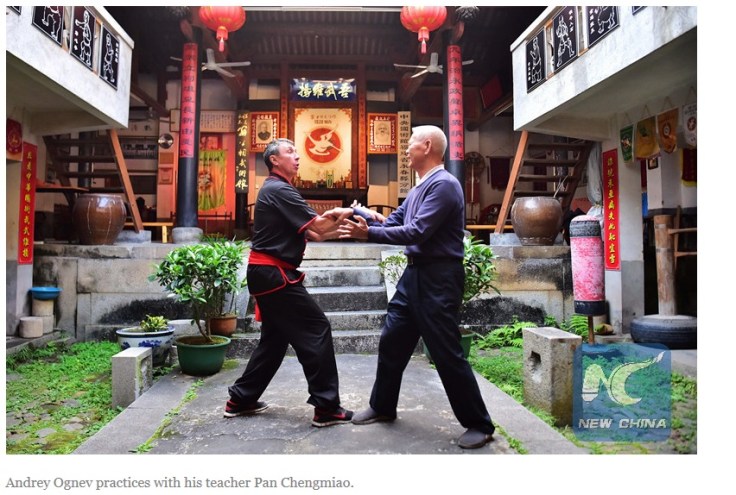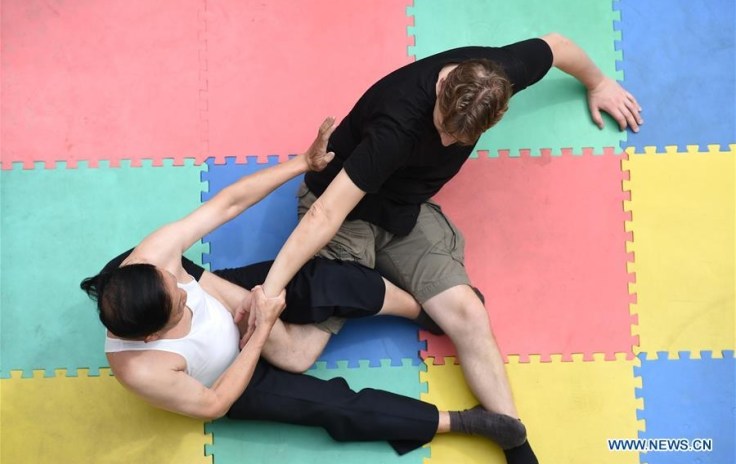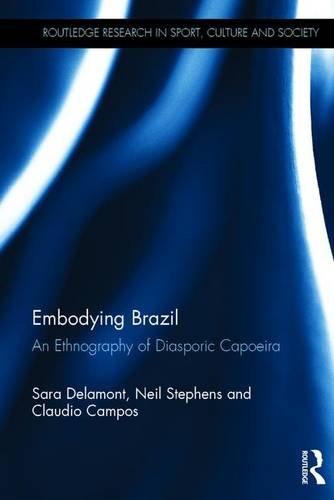Introduction
Welcome to “Chinese Martial Arts in the News!” Its great to be back at my keyboard after spending the last week and half on other projects. I managed to finish the draft of my chapter and am looking forward to posting some new material and guest posts over the next few weeks before the academic conference season clicks into high gear and things get a bit crazy again. But right now its time to get caught up on current events.
As regular readers know, this is a semi-regular feature here at Kung Fu Tea in which we review media stories that mention or affect the traditional fighting arts. In addition to discussing important events, this column also considers how the Asian hand combat systems are portrayed in the mainstream media.
While we try to summarize the major stories over the last month, there is always a chance that we may have missed something. If you are aware of an important news event relating to the TCMA, drop a link in the comments section below. If you know of a developing story that should be covered in the future feel free to send me an email.
Its been way too long since our last update so there is a lot to be covered in today’s post. Let’s get to the news!
News from all Over
One of the first things that I came across when researching this news update was a pair of photo-essays that had been republished on a number of Chinese tabloid and magazine webpages. Better yet, both of them profiled important styles of Southern Kung Fu that do not get enough press coverage.
The first of these was titled (somewhat awkwardly) “A Russian Kungfu lover’s Bruce Lee style.” It discussed one student’s “Kung Fu pilgrimage” to Yong Chun County in Fujian to study White Crane Kung Fu. Apparently he was inspired by the art’s (very tangential) connection to Bruce Lee. But its always great to see White Crane getting profiled.
I have taken the liberty of lightly editing the title of the next photo essay. It should read: “A Couple from the Netherlands introduce [one specific type of] Chinese martial art to [some people in] their country.”
Here is what you need to know: “Arend, 39, was from the Netherlands. He and his wife Khingeeva Tatyana came to China in October 2013. Besides doing research and teaching as a professor at a laboratory in School of Life Sciences in Fujian Agriculture and Forestry University, Arend was a fan of Chinese martial arts. As students of Kung Fu master Lin Zaipei, Arend and his wife learned the Dishuquan, which is also known as the Dog Kung Fu, one of the most popular martial arts styles in Fujian Province and a national intangible cultural heritage. They went to the martial art club every week to practice with Dog Kung Fu lovers from all over the world.”
This one was a little short of description, but its great to see Dog Boxing in the news. And who doesn’t love the traditional training uniform of slacks and a t-shirt. Now that is old school!

Is learning Kung Fu from a local Sifu just “too 1970s” for you? Or maybe you cannot find one in your area? A recent report on CCTV profiles a master who has you covered. The heart of this piece is a five minute video discussing the on-line teaching platform that he has created and interviews with both him and his students. Its an interesting discussion of one instructor’s attempts to both drag traditional kung fu instruction into the modern era, while at the same time vastly expanding his student base. This sort of thing always strikes me as pretty problematic, but its a nicely produced report.
The Christian Science Monitor ran a piece looking at Chen Village’s recent attempts to lobby for UNESCO Intangible Cultural Heritage protection for Taijiquan. We looked at this issue in our last news update as well. But the added wrinkle in this article is the narrative of a growing rivalry between Taijiquan and Yoga, and the suggestion that Taiji might be losing the image battle in China.
“But there are other issues at stake here, too. For one, yoga, which won UNESCO designation in India last year, has emerged as a trendy alternative. Then there’s the simple fact that the ancient martial art isn’t as popular among young Chinese, many of whom think of it as a low-intensity exercise better suited for their grandparents.
“The first impression I have of tai chi is that it’s something old people do in parks,” says Yin Haolong, a 29-year-old freelance graphic designer and photographer in Beijing.”
In contrast, the modern combat sports (particularly Muay Thai and MMA) seem to be growing pretty quickly in China. This article provides a profile and long form discussion of the emergence of a distinctive brand of Chinese Fight Clubs.
“Unlike the U.S. or U.K., where boxing has strong historic links to working-class communities (most famously Gleason’s Gym in the Bronx, where Jake LaMotta trained, and London’s Repton Club), its popularity often rising with economic downturn and unemployment, there’s no equivalent blue-collar boxing history in China, nor much infrastructure for training aspirants. Instead, there is a small but burgeoning interest in grassroots fight clubs. Like most, the Monster Fight Club uses Mixed Martial Arts (MMA) rules, a full-contact blend of fighting styles, although it is obliged to play by slightly looser ones when it comes to the law. As far as Shi Jian, one of the co-owners, is concerned, Monster is a “cultural sporting company” that promotes “positive energy,” propagandist language that reassures the authorities—who can close grey operations like Monster at the drop of a brown envelope—and allows them to promote low-key events that would normally require a complex series of permits.”

“‘Kung Fu Kenny’ Is Just the Latest Example of Hip-Hop’s Fascination With Martial Arts.” So says the next article. I think that this piece will be particularly helpful for anyone interested in the roots of the relationship between the Chinese martial arts and the emergence of hip hop. This article touches on some thought provoking arguments about cultural borrowing and methods of pedagogy. Here was one of the points that was a big take-away for me:
“On a very direct and literal level, kung fu films also gave young black and brown kids heroes who were not white (“it’s hard to understand looking back on it how revolutionary that was,” Schloss says). But there was also a new model of learning—crucial for children who, like kids everywhere and at all times, mostly hated school. People in kung fu movies learned from a master, practiced their skills obsessively, and developed new styles, all practices that made their way into hip-hop culture.
“What martial arts really did for hip-hop was to provide a model for an apprenticeship system that showed how you could respect a teacher or a mentor without diminishing your own self-respect,” says Schloss. “It was a model where you could be like, ‘I’m going to learn to be humble and disciplined, and let this guy tell me what to do, but that doesn’t mean that I’m letting him disrespect me.’ That’s a big part of what allowed the art form to develop, because when people put themselves in that situation, they were able to learn a lot of important things and push the art form forward by being open to that instruction.”

The Asian Times recently ran a review of a Bruce Lee film festival that ran in the MoMA in New York. This will be an interesting read for Bruce Lee fans.
When Bruce Lee was making martial arts movies in the early 1970s, it would never have occurred to him that his films would be screened at New York’s prestigious Museum of Modern Art 45 years later.
But that’s just what happened with Eternal Bruce Lee, a five-film retrospective of Lee’s work that screened at the museum in January and February. The show reflected Lee’s gradual metamorphosis from martial arts legend to bona fide cultural icon in the US.
Those who prefer their martial arts fiction in written form may have heard about the recent passing of the Hong Kong novelist Huang Yi. The South China Morning Post has been covering this story and had some interesting discussion of his work and career.
Tributes have been paid to Hong Kong wuxia novelist Huang Yi, who has died aged 65 after suffering a stroke….
Professor Ma Kwai-min, from Chu Hai College’s department of Chinese literature, told the Post that Huang had originally started off as a science fiction writer.
“He later switched to writing xuanhuan novels such as Xun Qin Ji, which combines historical backgrounds with a protagonist who travels through time,” Ma said, in reference to a genre of wuxia.
“Such fictions and novels are still being written and published on the internet, and they are popular, but Huang did it 20 years ago.”
This last story goes out to my fellow travelers on the path of the Lightsaber. Apparently the word “lightsaber” has recently been added to “the” dictionary. But this same dictionary also added the term “man-bun” to its pages…so take that news for what its worth. But hey, what about that Star Wars: The Last Jedi trailer.
Martial Arts Studies
Are you looking for a good read? The Martial Arts Studies literature just keeps growing. Here are two titles that have caught my eye, both of which have been added to my summer reading list.
Now Available for pre-order:
Her Own Hero: The Origins of the Women’s Self-Defense Movement Hardcover – NYU Press August 8, 2017 by Wendy L. Rouse
At the turn of the twentieth century, women famously organized to demand greater social and political freedoms like gaining the right to vote. However, few realize that the Progressive Era also witnessed the birth of the women’s self-defense movement.
It is nearly impossible in today’s day and age to imagine a world without the concept of women’s self defense. Some women were inspired to take up boxing and jiu-jitsu for very personal reasons that ranged from protecting themselves from attacks by strangers on the street to rejecting gendered notions about feminine weakness and empowering themselves as their own protectors. Women’s training in self defense was both a reflection of and a response to the broader cultural issues of the time, including the women’s rights movement and the campaign for the vote.
Perhaps more importantly, the discussion surrounding women’s self-defense revealed powerful myths about the source of violence against women and opened up conversations about the less visible violence that many women faced in their own homes. Through self-defense training, women debunked patriarchal myths about inherent feminine weakness, creating a new image of women as powerful and self-reliant. Whether or not women consciously pursued self-defense for these reasons, their actions embodied feminist politics. Although their individual motivations may have varied, their collective action echoed through the twentieth century, demanding emancipation from the constrictions that prevented women from exercising their full rights as citizens and human beings. This book is a fascinating and comprehensive introduction to one of the most important women’s issues of all time.
Wendy L. Rouse teaches United States History and social science teacher preparation at San Jose State University. Her research interests include childhood, family, and gender history during the Progressive Era.
Out Now:
Embodying Brazil: An ethnography of diasporic capoeira (Routledge Research in Sport, Culture and Society) (Routledge, 2017) by Sara Delamont, Neil Stephens, Claudio Campos
The practice of capoeira, the Brazilian dance-fight-game, has grown rapidly in recent years. It has become a popular leisure activity in many cultures, as well as a career for Brazilians in countries across the world including the US, the UK, Canada and Australia. This original ethnographic study draws on the latest research conducted on capoeira in the UK to understand this global phenomenon. It not only presents an in-depth investigation of the martial art, but also provides a wealth of data on masculinities, performativity, embodiment, globalisation and rites of passage.
Centred in cultural sociology, while drawing on anthropology and the sociology of sport and dance, the book explores the experiences of those learning and teaching capoeira at a variety of levels. From the beginners’ first encounters with this martial art to the perspectives of more advanced students, it also sheds light on how teachers experience their own re-enculturation as they embody the exotic ‘other’.
Embodying Brazil: An Ethnography of Diasporic Capoeira is fascinating reading for all capoeira enthusiasts, as well as for anyone interested in the sociology of sport, sport and social theory, sport, race and ethnicity, or Latin-American Studies.









Leave a comment